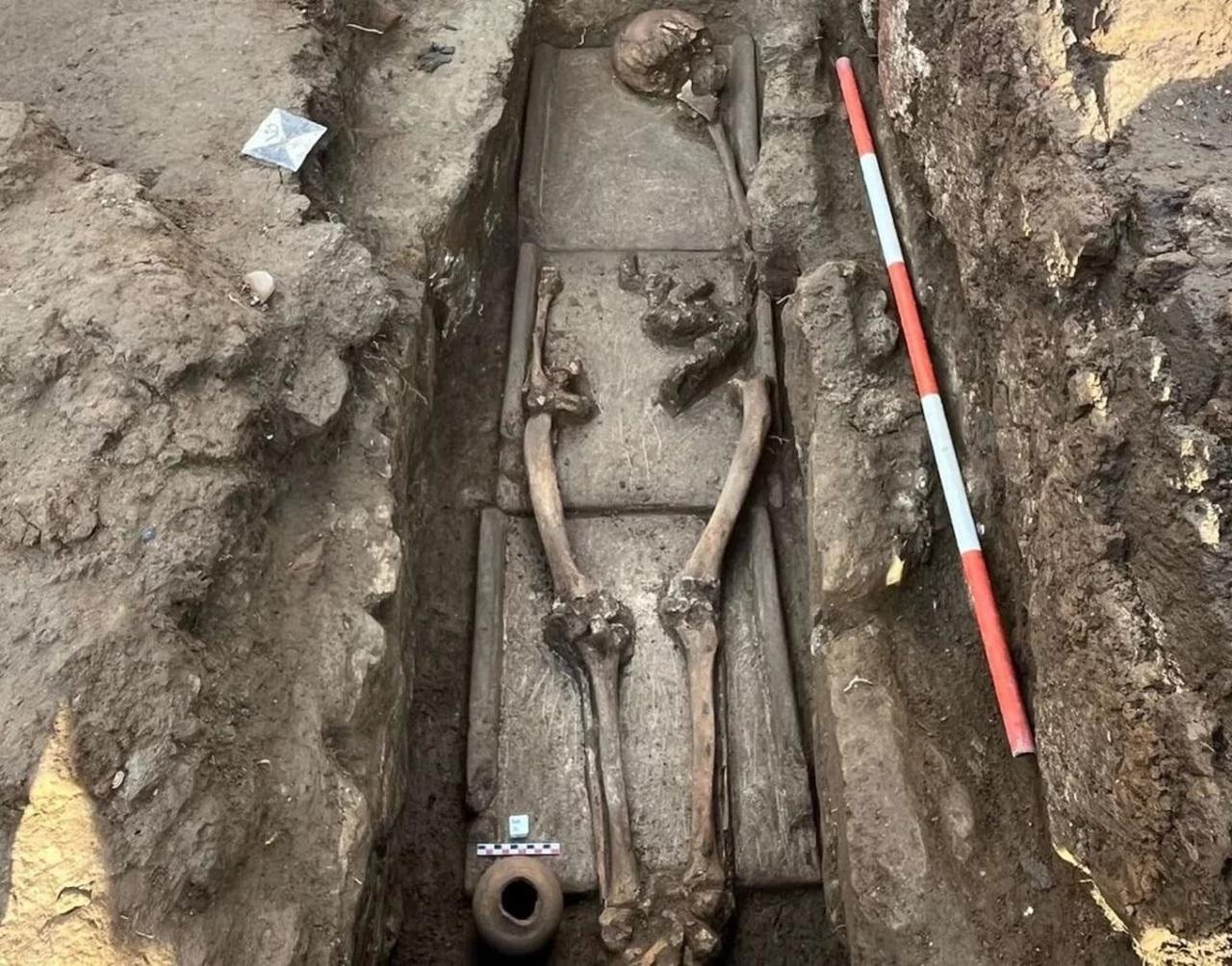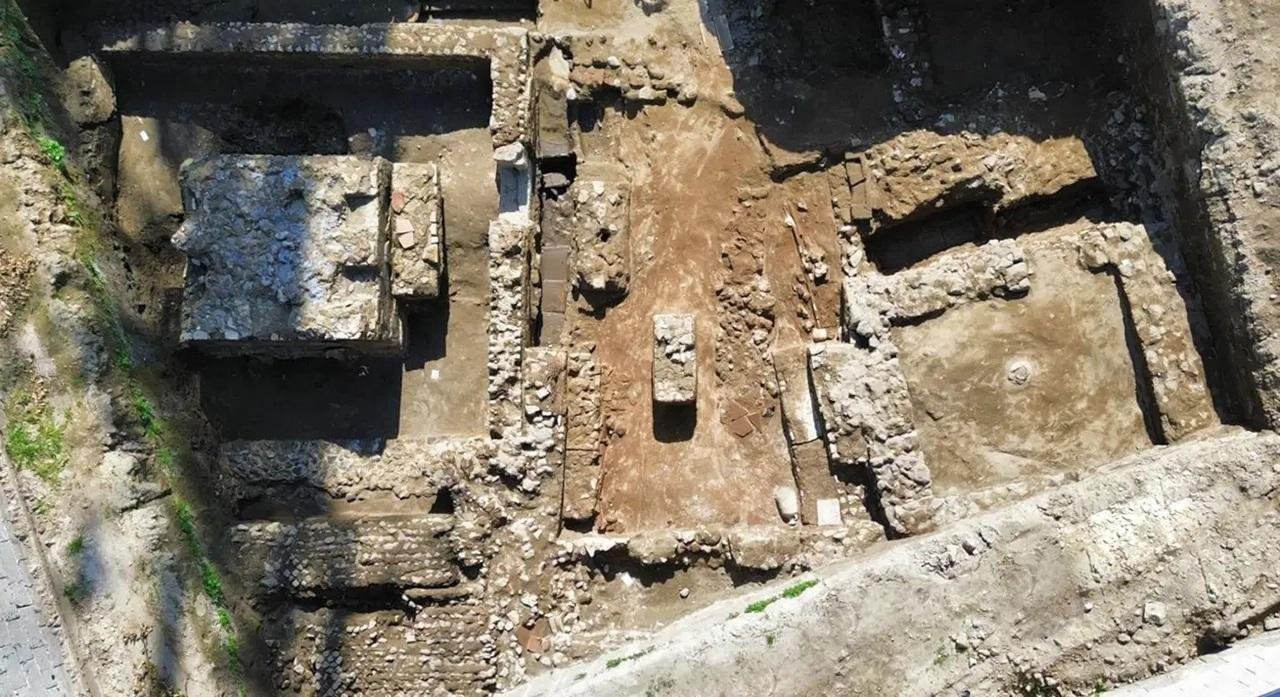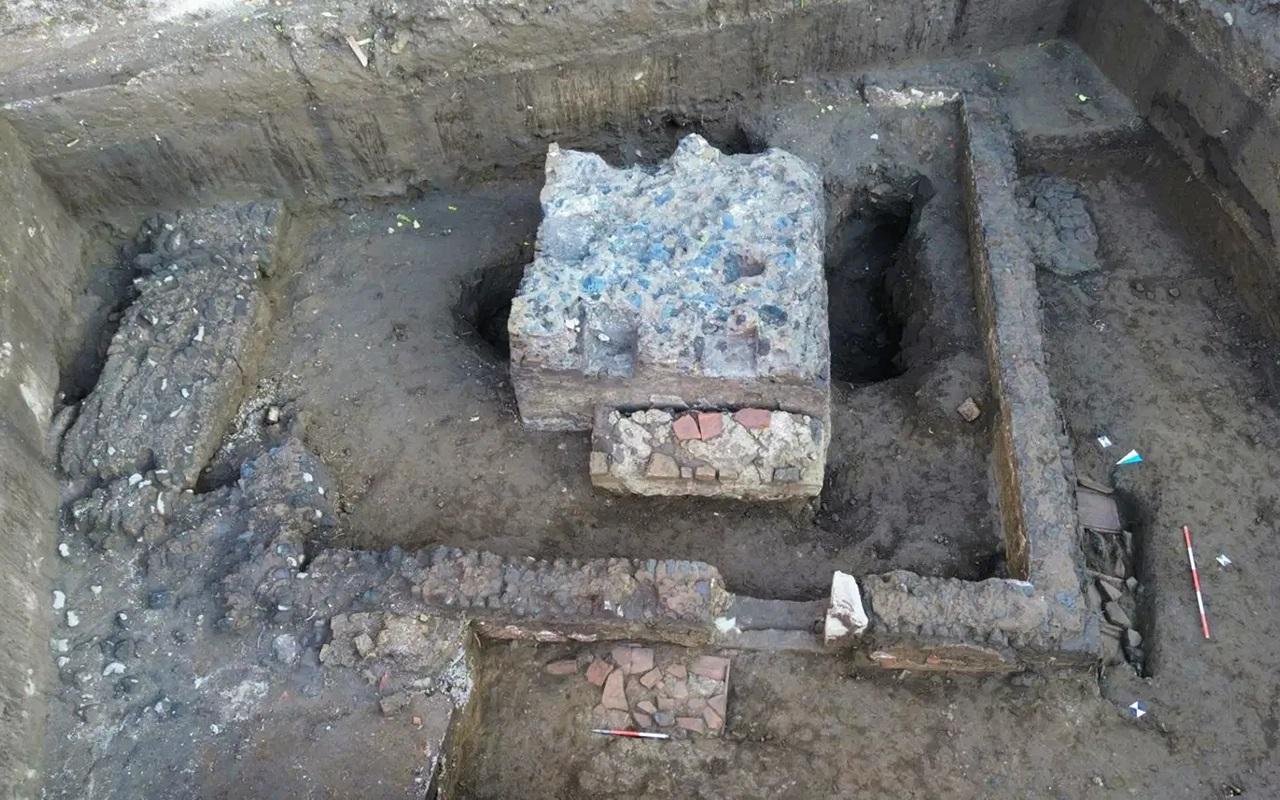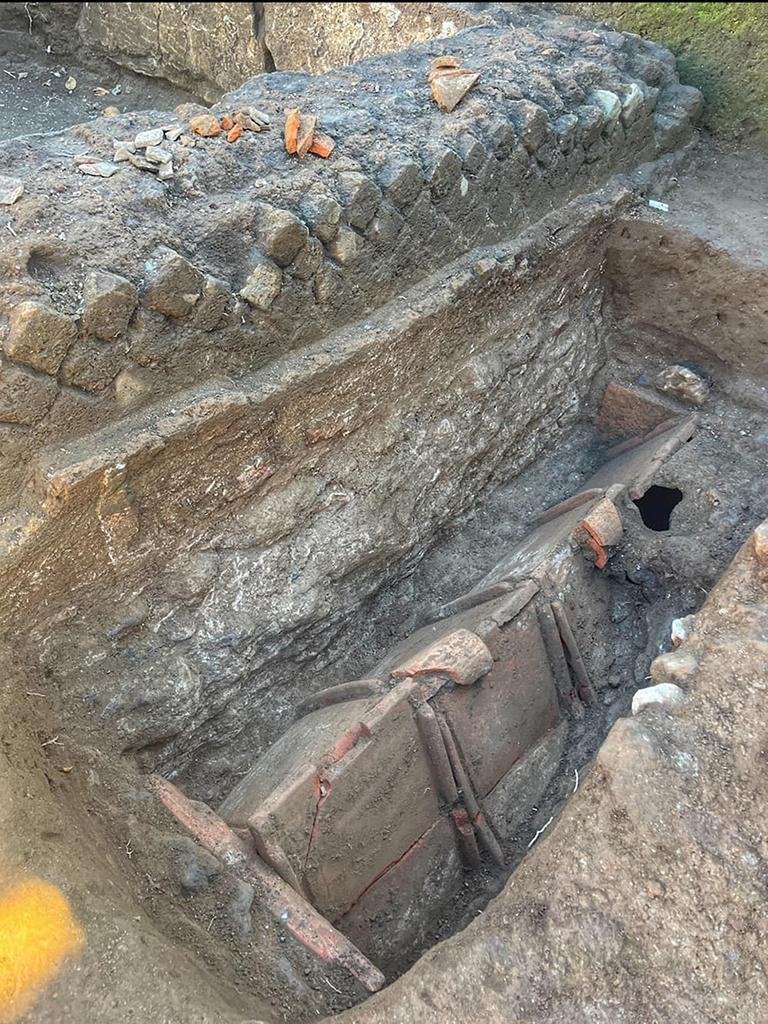Excavations in Liternum, an ancient Roman colony located in Giugliano in Campania, have revealed a number of important funerary structures from the late 1st century BCE to the 3rd century CE. This project, conducted by Dr. Simona Formola under the supervision of the Superintendency for the Metropolitan Area of Naples, reveals fresh information about Roman burial practices and the colony’s structure.
 One of the graves found in the site. Credit: Superintendency for the Metropolitan Area of Naples
One of the graves found in the site. Credit: Superintendency for the Metropolitan Area of Naples
The necropolis, located within the Forum and amphitheater of Liternum and protected by the Ministry because of its importance, measures more than 150 square meters. Some of the major discoveries include two funerary enclosures, which are partially preserved and consist of a white plaster wall decorated with red details. The enclosures are divided by a deep masonry well that likely connected to cultic rituals, while a central mausoleum built in the opus reticulatum technique features gray tuff blocks and plastered niches for cinerary urns and dominates one of the spaces.
Archaeologists discovered more than twenty burials in the area around these enclosures, which displayed a variety of Roman burial practices. Excavated burial types included cappuccino tombs—constructed with roof tiles arranged in a gabled arrangement—enchytrismos burials, in which human remains were placed in large terracotta jars, and box tombs made from brick. Objects retrieved from the burial site (including coins, oil lamps, and ceramic vessels) provide valuable information about the daily life and cultural traditions of the colony’s inhabitants.
 General view of the tombs. Credit: Superintendency for the Metropolitan Area of Naples
General view of the tombs. Credit: Superintendency for the Metropolitan Area of Naples
One of the most notable finds from the excavation is a well-preserved marble funerary inscription dedicated to a gladiator. It is a rare reminder of the role and memory of these fighters in Roman society, and it suggests that Liternum was home to gladiators who lived and were interred there after their careers in the arena.
 Mausoleum from above. Credit: Superintendency for the Metropolitan Area of Naples
Mausoleum from above. Credit: Superintendency for the Metropolitan Area of Naples
Superintendent Mariano Nuzzo noted the significance of the finds by saying: “The territory of Giugliano is experiencing a particularly fruitful period for archaeological research. First, there was the discovery of the Tomb of Cerberus, and now this necropolis, which due to its great preservation of the walls and burials is a relevant addition to our knowledge of the settlement history of the Liternum colony.”
In addition to contributing to our understanding of Roman funerary practices, the discovery has led researchers to propose new hypotheses about the route of the ancient Via Domitiana, which connected southern Italy to Rome. The placement of the burials indicates they were originally aligned along this historic road, adding an additional level of enrichment to the understanding of Liternum’s urban layout.
 Another of the graves fount in Liternum. Credit: Superintendency for the Metropolitan Area of Naples
Another of the graves fount in Liternum. Credit: Superintendency for the Metropolitan Area of Naples
Continuing excavations, along with a detailed study of archival records and artifacts recovered, will provide additional layers of detail that will allow us to expand our knowledge of the colony’s history and social dynamics.
More information: Superintendency for the Metropolitan Area of Naples





